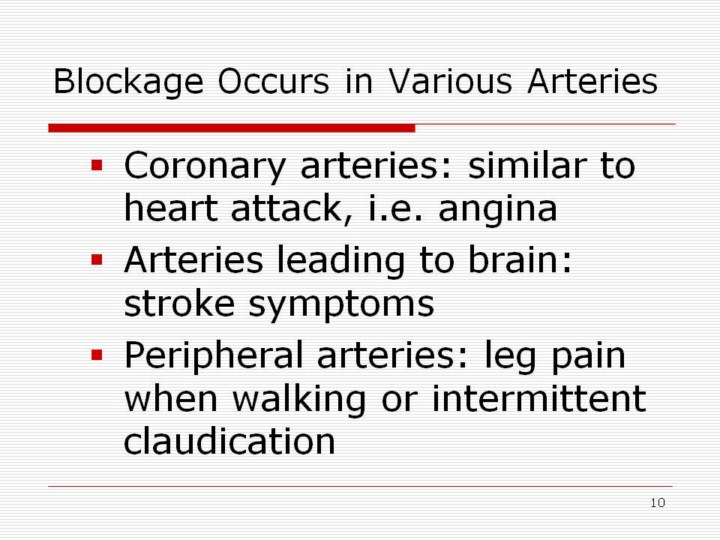| front |1 |2 |3 |4 |5 |6 |7 |8 |9 |10 |11 |12 |13 |14 |15 |16 |17 |18 |19 |20 |21 |22 |23 |24 |25 |26 |27 |28 |29 |30 |31 |32 |33 |34 |35 |36 |37 |38 |39 |40 |41 |42 |43 |44 |45 |46 |47 |48 |49 |50 |51 |52 |53 |54 |55|56 |57 |58 |59 |60 |61 |62 |63 |review |
 |
Symptoms will depend on the location of the blockage. In the heart: the symptoms may be similar to those of a heart attack (chest pain) In the arteries leading to the brain (carotid arteries) People might have stroke symptoms like sudden numbness or weakness in your arms or legs, difficulty speaking or slurred speech, or drooping facial muscles. If it is in the peripheral arteries (usually the legs) the most common symptom is weakness, burning and pain in the legs when walking that is relieved by rest. Another symptom of peripheral artery disease is intermittent claudication. Claudication is limping or impaired gait when walking or recurrent cramping. |